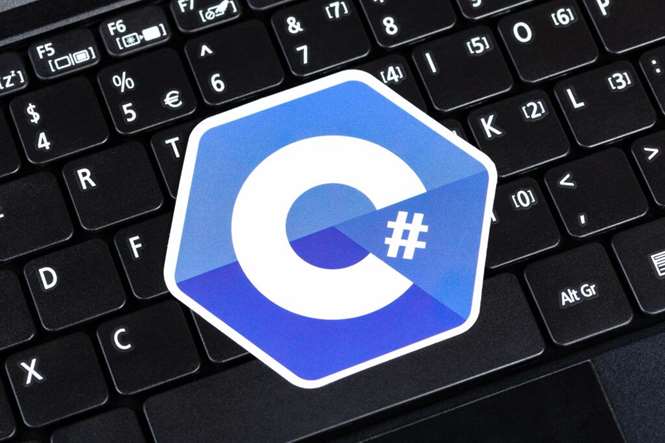JUN
23
Depending on the typical activity in your IT department, your CAB may meet as often as twice weekly. No matter the frequency of meetings, the Change Manager should communicate the scheduled change required well in advance of meetings, so individuals on the CAB are prepared to make the best decisions. When it comes to management and control of changes to services and service components, one of the biggest challenges is determining who has the authority to make change decisions. If you haven’t yet started your journey as a software developer, you might ask yourself, “Is software development for me?

Nearly every publication on Configuration Management (CM) has its own definition of the subject. I have chosen to quote a few examples to illustrate their common properties and to be able to compare those further on with lean and agile thoughts. The best CABs are able to become indispensable for their engineering teams.
Related Content on Change Control Boards
Traditionally it is often the configuration manger’s task to keep track of the defect list, or queue. A lean approach would be to prevent defects by finding and fixing them before they end up as defects in a test phase. This can be done by automating the test process having automated tests of different levels for unit- acceptance- and regression testing and eventually also Test Driven Development (TDD). In many organizations, change management and release management begin to blend together. Instead of serving as a gatekeeper, the CAB serves as advisers to product teams.

These teams can be software developers, testers, quality assurance offices, marketing teams, etc. It’s common to have business stakeholders involved in change management and participate in the change control board. That means that various departments can be brought in to better understand the impact of the change.
#6 – Processes
Approvers work closely with managers to approve and direct change in the organization and/or project. In smaller organizations, however, the approver and the change manager are the same people. Once the change control board has approved a change, the change must be managed. ProjectManager is work and project management software with multiple project views that allow you to work how you want.

Statista says that DevOps is getting used by nearly 36% of respondents worldwide as a software development methodology. Lean CM shares the same values as agile development methods and lean principles. Lean CM supports the empirical nature of software development and is more adaptive to changes instead of being predictive. Factors affecting a CCB’s decision can include the project’s phase of development, budget, schedule, and quality goals. The software development life cycle, or SDLC, refers to the different stages of developing an application or program.
What does CCB mean?
A mature software development organization is one that can rapidly and repeatedly transform customer requirements into deployed high quality code. This is where lean CM really comes into play by supporting the agile methods and lean principles in order to reduce waste, as well as using tools to further support the process and automate tasks. If you’re looking for a route to automate specific processes within your company, consider using automation tools such as release management tools or continuous integration (CI) services like Jenkins.

Its structure supports thorough planning and frequent adaptation as needed. Agile Methodology is worldwide popular in 31% of the projects as per a survey conducted by Statista. Agile practices don’t prescribe one specific way of working; instead, they give teams flexibility when working with different projects. The implementation stage of a project is where all of your ideas are brought to life.
Business Stakeholders
The Enterprise Code Inventory is a listing of code products published in accordance with OMB M-16-21, on the Department’s Intranet site. The purpose of the Department’s Enterprise Patch Management Program is to protect data confidentiality, integrity, and availability by mitigating software and hardware vulnerabilities ccb software development through proactive patch management. An SOE supports development of strong configuration management plans for the computing environments commonly used throughout the Department. The following ideas are based on real world experiences from several different projects in different organizations.
- A low-level CCB could handle lower priority change requests, for instance non-customer-facing features or changes with low/no cost impact.
- By gathering input from key stakeholders about business processes, user needs, and system capabilities early in development, teams can create systems that are easier to change later in their life cycles.
- Build Quality In – This is about building quality into the process/product instead of adding it in a test phase at the end.
- The goal is to use developers’ time better, increase Communication among team members and shorten development cycles.
- This Church Community Builder review is part of our series of church management software (ChMS) reviews to evaluate how each ChMS performs.
- Its structure supports thorough planning and frequent adaptation as needed.
Reports are also easily sharable and come in multiple formats to keep stakeholders updated. As you’d expect, communication is critical, so the channels and frequency in which stakeholders are updated must be well-defined. There should be a member whose responsibility is to update those stakeholders. Ideally, there should be one depository for information to ensure everyone is working with the most current data.
Know what is CCB? Got another good explanation for CCB? Don’t keep it to yourself!
This phase often requires extensive programming skills and knowledge of databases. The team will build functionality for the product or service, which includes creating a user interface and building the database so users can store information in your system. This approach is excellent for projects with clear goals and consistent requirements throughout.
In the same way an agile CM process is supporting and facilitating the work of the team. We can make the CM process support fast deliveries and higher quality by introducing continuous integration and automated testing into the build process together with frequent incremental deliveries. Deliver Fast – For some reason it has been widespread in the software industry that if we do things slow and careful we get higher quality, especially when it comes to requirements gathering. However if we instead deliver fast and frequent we get rid of waste, we get valuable feedback and we are able to find hidden errors much earlier, all leading to higher quality.
CCB Stands For:
The CAB protects the integrity of the target environment and is generally risk averse in nature. The release manager is responsible for satisfying the information needs of the CAB to assure the change will not adversely impact the target environment. If the release manager comes across as vague or dismissive, it is likely that the change will be deferred to the next release. Release Managers are responsible for raising change request tickets in order to get a slot into the forward schedule of change. These change requests are then assessed at CAB if they are deemed a major release.
It is essential to manage the volume of interdependent change within an organization. Overall, CCB offers a full suite of features that churches of any size could use. With so much functionality, the challenge for church leaders isn’t a lack of capabilities – it’s in the setup and implementation of the tool. Careful planning and leveraging CCB’s support offerings can make the initial setup process run smoothly. Church Community Builder has steadily served its customers for over two decades.
It’s here that you start actively designing and coding to make your vision become a reality. You will work out the details to build your website, and, in turn, you’ll gain experience for future projects. To get started, you need to choose what you want to build and write up a description of your idea in software development terms. That’s where all of your brainstorming, research, and market analysis needs to go.